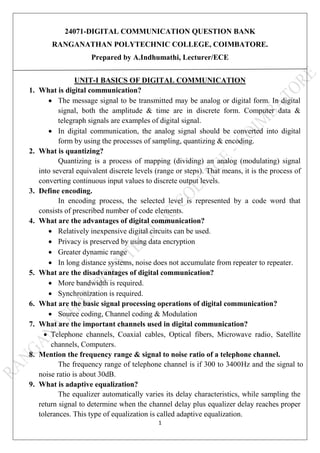This document contains a summary of key concepts in digital communication. It discusses digital communication, quantizing, encoding, advantages and disadvantages of digital communication, basic signal processing operations, common channels used, telephone channel specifications, adaptive equalization, waveform coding techniques including pulse modulation, analog pulse modulation types, digital pulse modulation types like PCM and DM, sampling, quantizing, uniform and non-uniform quantization, companding, applications of PCM, advantages and disadvantages of delta modulation and DPCM, and an introduction to digital modulation techniques.













